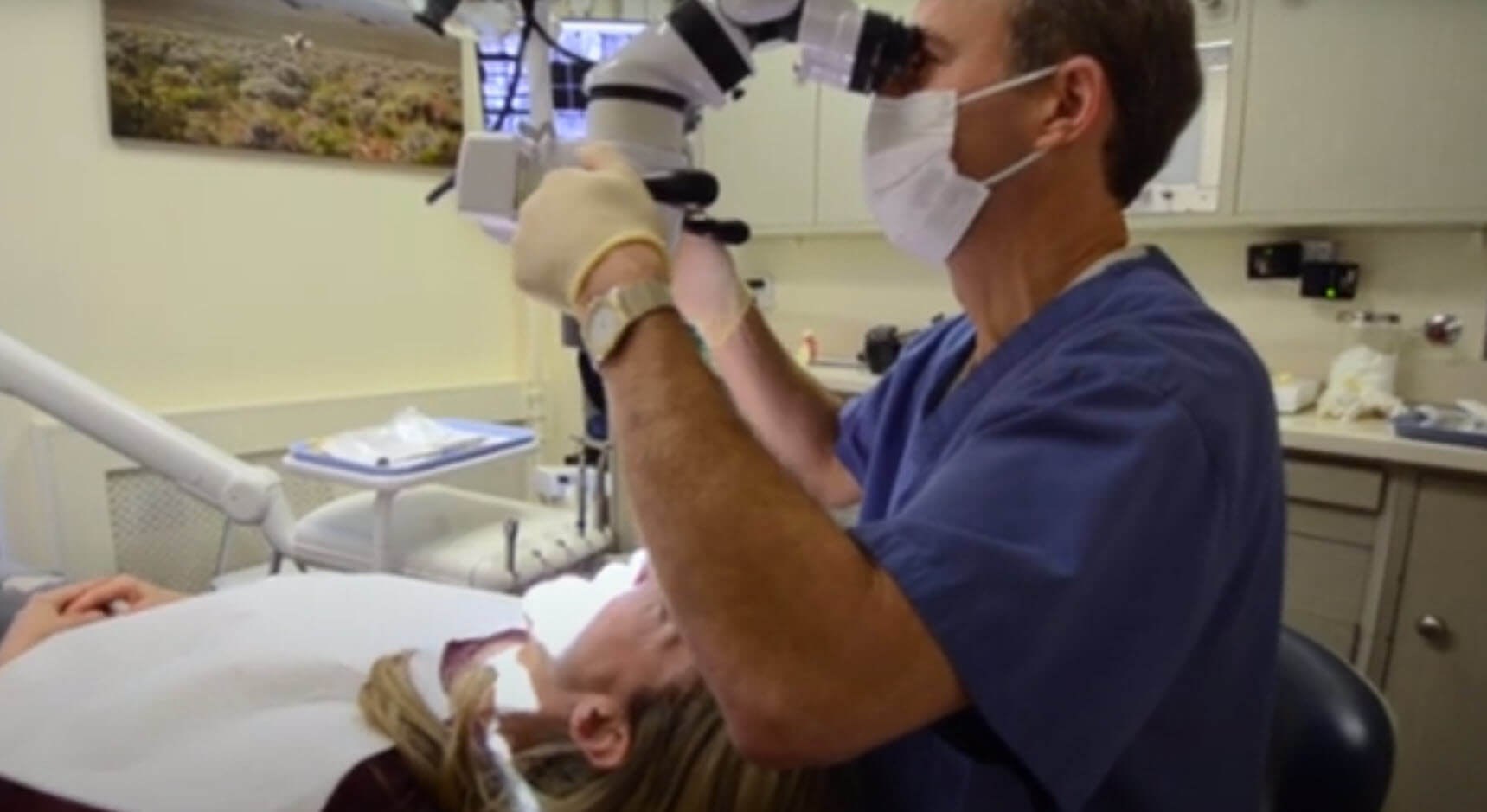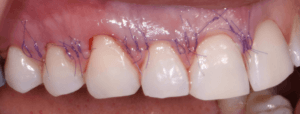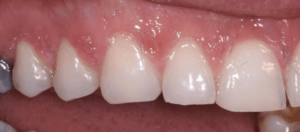Hope you all are well. I was reviewing past photographs and came upon a patient who was seen for cosmetic crown lengthening prior to veneers. This patient had a high smile line and was frequently in the public eye. Clearly these New York City patients require very careful treatment planning and predictable results. Using traditional periodontal procedures would require;
- An initial gingivectomy to ideal clinical crown height,
- Split thickness flap through most of the papilla, transitioning into a full thickness flap to expose bone,
- Ostectomy/osteoplasty as necessary to reestablish the biologic width and hard tissue form,
- Closure of the split thickness papilla with an interproximal suture.
I have performed these exact steps many, many times. A long time ago, I had realized there are limitations to traditional periodontal techniques. These procedures do not maximize the New York City patient’s ability to heal quickly and can result in pain, papillary deficiency, soft tissue scars or non-confluent tissue closure.
Benefits of Periodontal Microsurgical Techniques
Below you will see one of the benefits of periodontal microsurgical techniques, maximizing the New York City patients healing response. For the past 12 years, I have been using an alternative incision design for crown lengthening that cannot be used with traditional periodontal techniques. The incisions are made with a microsurgical blade and are located horizontally near the base of the papilla.
The reason I use this design, is to predictably maintain the entire papilla, obtain absolute primary closure and there is no post-operative discomfort. If this design was utilized with traditional periodontal procedures, the result would be scaring and an unaesthetic papillary appearance.
In this case shown, osseous reduction was performed and primary closure was achieved. It’s been shown that with microsurgery, vessels can anastomose in 48 hours. This is why you have seen such fast healing with no discomfort. Periodontal microsurgery and microsurgical philosophy were implemented to provide the New York City patient with the very best surgical experience we have in dentistry today. I use periodontal microsurgical techniques for many procedures such as exams, extractions, sinus lifts, guided bone regeneration, soft tissue grafts and implant placement. It provides a more comprehensive diagnosis, precise treatment execution, less complications and little to no discomfort (even with advanced procedures).
Periodontal Microsurgery Photos
The first photograph shows 7-0 monofilament sutures closing the horizontal incisions. The incisions are difficult to see because they are made with a much smaller and thinner blade than a 15 or 15c blade. This allows for close tissue re-adaptation.
The second photograph shows 1 week healing. The healing at this point is similar to what you would see at 3-4 weeks using traditional care. As you can imagine, the patient had no discomfort with this microsurgical osseous surgery.


